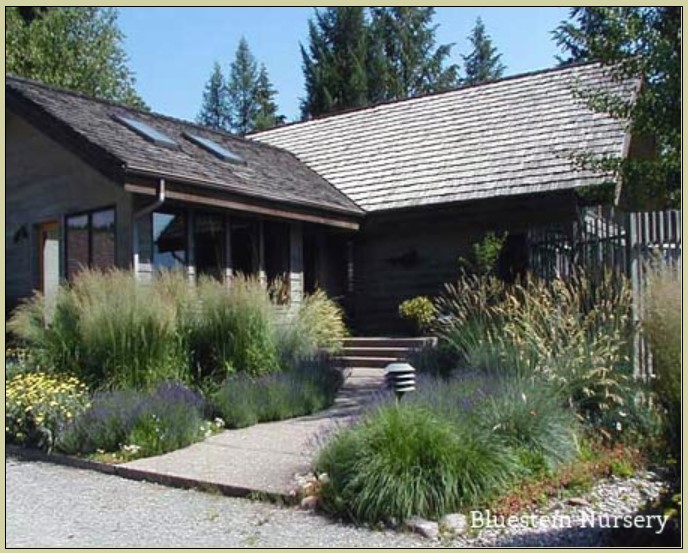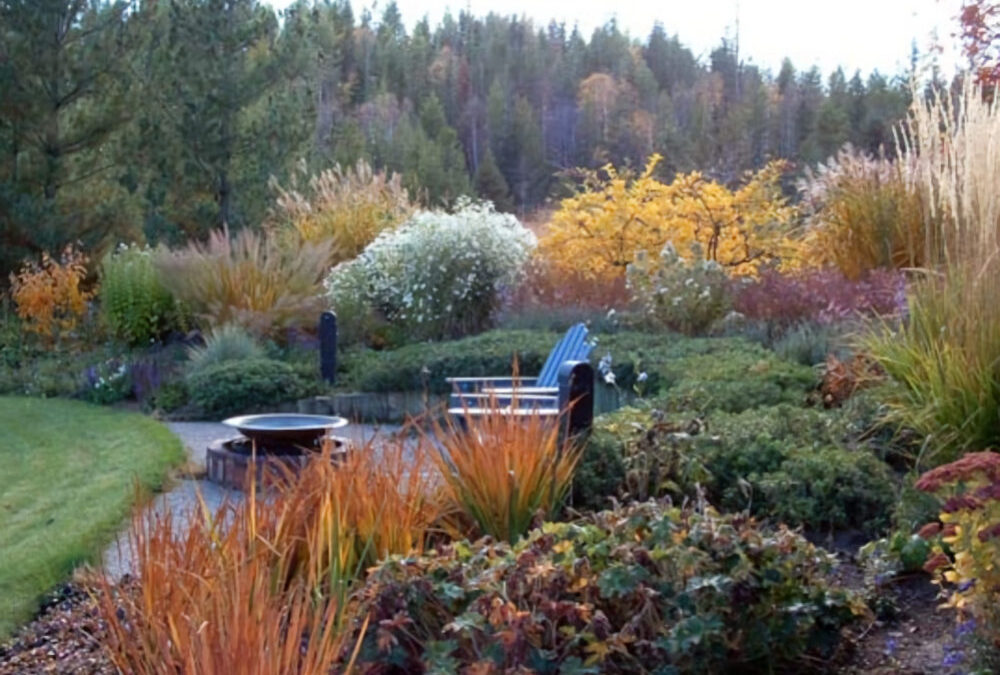Article and Photos by Mark Godlewski
The following is largely put together from information provided by Jim Brockmeyer and Muriel Neale as part of their Bluestem Nursery webpage. Both have now retired, but their excellent website lives on with funding for the hosting provided by OXA.
Trimming Cool Season Grasses
Normally you want to trim your cool season grasses in early spring. During the winter, depending on the species and the weather, grasses can create a great deal of interest in your garden. However, you will want to trim all your cool season grasses down to about 3-4 inches above the crown before they start growing in the spring. If you are late and there is significant new growth your best bet is cut down only two thirds of the grass. For thin grasses you may want to use hedge trimmers. Otherwise, a coarsely-serrated knife is the best tool for this. You may be able to pick up an old bread knife from your thrift store. It is also a good idea to wear gloves and long sleeves. Some of the grasses can give you a nasty cut if they slide along your skin.
Fig. 1 – Cutting Tools
A tip regarding cutting back larger grass clumps is to tie one or two bungee cords around it before you start to cut. You want to keep all the stalks and leaves in a tight bundle. This makes it much easier to get rid of the mess later….and a mess there will certainly be if you don’t!
Trimming Warm Season Grasses
There is no great rush to prune these grasses in the spring depending on how they look in your garden. You can wait until late spring. Some warm season grasses such as Miscanthus or Saccharum have very thick stems. Here you will need pruning shears, or a pruning saw to cut them off 4-6 inches above the crown.

Fig. 2 – Warm Seson Grasses in Winter
Trimming Evergreen Grasses
Some Fescues and Blue Oat Grass Helictotrichon fall into the evergreen (everblue?) category. A few people, especially those at landscape maintenance companies, like to cut these grasses back early but that is not the best for the health and shape of the plant. Blue Oat grass responds well to being combed (with a gloved hand) in the fall and maybe again in the spring. The dead leaves and flowers will come loose relatively easily. Some of the tan-coloured leaves will remain until the next season. Some other evergreen grasses and Carex experience a fair bit of dieback in our winters. You can shear back the dead leaf ends in the spring but be careful not to cut back too much into the living part of the plant.

Fig. 3 – A nice variety of grasses in the late summer
Take care to trim your ornamental grasses appropriately to achieve the best long term results.


